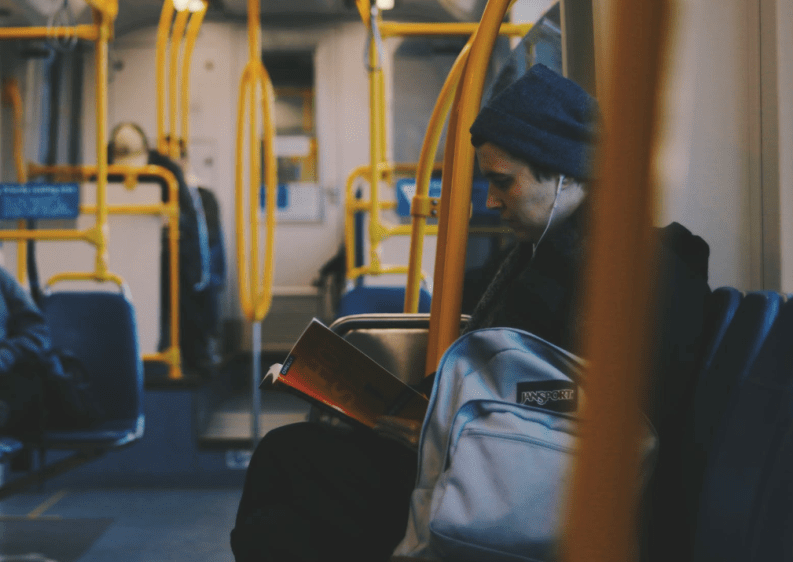Coord invites cities and other curb managers to apply for its Digital Curb Challenge to undertake a free curb management pilot program in 2020. Applications close on Feb. 14. Click here for information.
The federal Department of Transportation announced a new pot of funding available for bus systems yesterday — and it's nowhere near what our cities really need.
The agency announced on Thursday that cities can now compete for $454.6 million in grants for new buses and bus infrastructure — which sounds like a lot except that this is the pot of money the entire country. (On the plus side, the 2020 grants are 7 percent more than last year, but still...)
How small of a number is $454.6 million in the grand scheme of building comprehensive public transit in American cities? Let's break it down:
36 diesel buses per state
A single traditional diesel-powered bus costs anywhere from $280,000 in Colorado to about $550,000 in New York City (according to a 2016 Columbia study). So even if every city got the Denver discount, the entire federal bus grant pool would fund only 1,818 new buses for the entire nation.
That's roughly comparable to the 1,800 buses currently operated by a single city: Chicago.
12 electric buses per state
The average electric bus costs about $750,000, according to expert estimates. If we decided to divide up the whole pot of federal money and buy an equal number of electric buses for each of the 50 states, each one would get an even dozen.
True, there's a separate federal program specifically for funding low- and no-emissions transit vehicles; states and cities can throw their names in the hat for $130 million in affectionately nicknamed "Low-No" dollars this year. But that extra crumb will only get each state an average of three extra buses. That's not exactly a green revolution.
89 bus shelters per city
It's been Streetsblog's drumbeat for years that every single bus stop in America should have a shelter. Forcing riders to wait uncovered in the rain, snow and mud isn't just cruel — it's also a serious deterrent to ridership, according to the University of Utah. Ridership jumped 92 percent at bus stops that got shelters, researchers found.
So $454.6 million should totally get us all the bus shelters we could ever need, right? Well...
As Angie Schmitt reported for Streetsblog a while back, a durable, long-lasting bus shelter will run your city about $5,500 — and that's on the extreme low end. Still, if we could get that bottom-of-the-barrel pricing, the fed's pool of money would garner the nation's bus riders a respectable-seeming 82,981 bus shelters.
But when you divide that number by the 927 urban transit systems in the country at last count, each will get only 89 shelters. For context, New York City alone has 16,350 bus stops.
And that's not including the 1,295 rural transit networks out there, many of which operate bus networks. Have fun waiting for a bus in a hail storm, noble denizens of farmland Iowa!
So what would it cost to give every person waiting for a bus in America a dry place to wait? Schmitt pegged it at $2.85 to $5.2 billion. The high end of that is still less than Alabama will spend by the time the state is done building a single 52.5 mile stretch of interstate 422 — and that's just one road project.
Zero route improvements, zero increases in driver salaries, zero paratransit enhancements...
Maybe the most frustrating thing about our federal funding for buses is not how little the funds pay for, but what they won't pay for at all.
Legally, funds from the Grants for Buses and Bus Facilities program can't be used to do anything besides buy physical infrastructure. That means cities can use those dollars to pay for striping for a bus lane — but if they want to pay a transportation planner to figure out the best place to put that bus lane, tough. Cities also "can’t use [federal transportation funds] to hire a bus operator, or dispatchers, or people who are planning bus priority projects," bus expert Steven Higashide told City Lab. All those things have to be paid out of other funding sources, such as state and local taxes, as well as fares — none of which even begin to cover those essential personnel.
Paratransit is perhaps most impacted by federal spending restrictions. Many experts believe purchasing more accessible vehicles wouldn't help improve paratransit as much as common-sense service upgrades, such as finding ways to minimize how many paratransit users receive door-to-door service when they don't really need it.
"Many customers are not wheelchair-bound and, where appropriate, [a non-wheelchair accessible] vehicle could transport them to a convenient subway or bus stop, where they would receive free rides," Governing reported. "The [Citizen's Budget Commission in New York] estimates that the change would save as much as $22 million annually" in New York alone.
Whether it's more federal money, more ways to use federal money, or both*, it's past time for Americans to demand better for their bus networks. And with a new city making the news every day for considering or implementing fare-free buses, there's no better time than now.
*Yeah, it should definitely be both.






